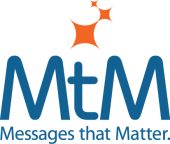Positioning Course
Positioning is the most important aspect of B2B software and technology marketing. In Crossing the Chasm, Geoffrey Moore writes, “Positioning is the single largest influence on the buying decision.”
Your position is a mental space in your target audience’s mind that you can own with an idea that has compelling meaning to the recipient. Done well, positioning can captivate your audience. Done poorly, it can make your audience stop listening.
Learn how to position effectively by taking the Messages that Matter online positioning course.
Develop Your Compelling Story
Everyone loves a good story. Effective positioning is like a story that quickly tells recipients what you do and why they should care about your product or service. When you lead off with a compelling story, you’ve got your target audience where you want them – listening to your message.
We call these compelling stories message strategies, and we teach a powerful positioning framework to create them.
The Messages that Matter positioning course guides you step-by-step to create a message strategy that is unique, important to the buyer, believable and can be used in all marketing communications. The course includes 12 lessons that explain how to create a positioning statement and the supporting story.
Start Shaping Buyer Decisions Now
We’ll lead you through a positioning framework that was developed at Microsoft and has been fine-tuned by Messages that Matter co-founder Lawson Abinanti. As you follow the framework, you’ll express your position in terms of a benefit that solves your customers’ most pressing problem.
When you complete the Messages that Matter online positioning course, you’ll have a compelling, differentiated position.
Don’t waste another dollar promoting a position that doesn’t stand out from the pack. Get started on a new course: Messages that Matter.
Still have questions?
Contact us for a free consultation.
